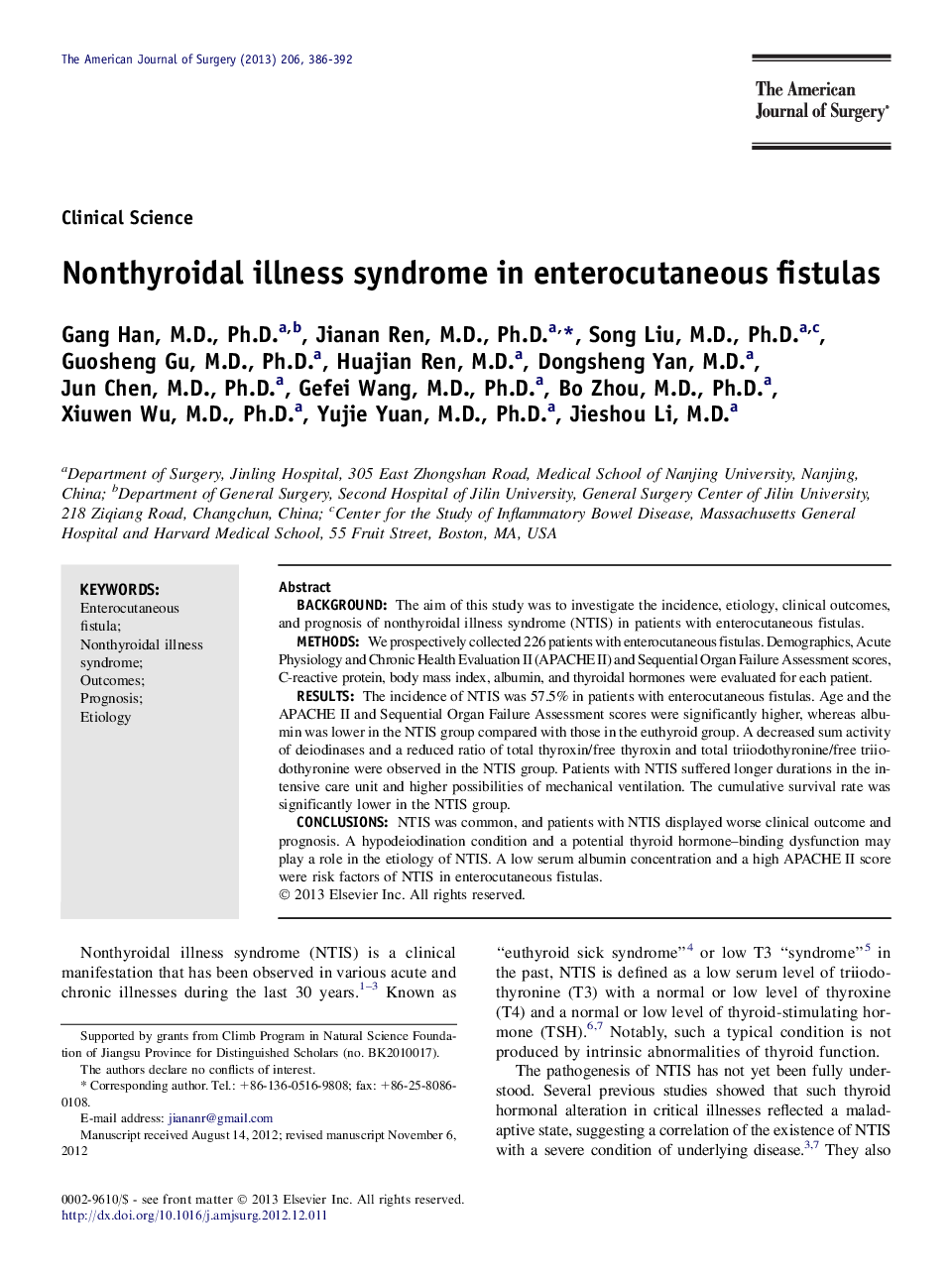| Article ID | Journal | Published Year | Pages | File Type |
|---|---|---|---|---|
| 4279118 | The American Journal of Surgery | 2013 | 7 Pages |
BackgroundThe aim of this study was to investigate the incidence, etiology, clinical outcomes, and prognosis of nonthyroidal illness syndrome (NTIS) in patients with enterocutaneous fistulas.MethodsWe prospectively collected 226 patients with enterocutaneous fistulas. Demographics, Acute Physiology and Chronic Health Evaluation II (APACHE II) and Sequential Organ Failure Assessment scores, C-reactive protein, body mass index, albumin, and thyroidal hormones were evaluated for each patient.ResultsThe incidence of NTIS was 57.5% in patients with enterocutaneous fistulas. Age and the APACHE II and Sequential Organ Failure Assessment scores were significantly higher, whereas albumin was lower in the NTIS group compared with those in the euthyroid group. A decreased sum activity of deiodinases and a reduced ratio of total thyroxin/free thyroxin and total triiodothyronine/free triiodothyronine were observed in the NTIS group. Patients with NTIS suffered longer durations in the intensive care unit and higher possibilities of mechanical ventilation. The cumulative survival rate was significantly lower in the NTIS group.ConclusionsNTIS was common, and patients with NTIS displayed worse clinical outcome and prognosis. A hypodeiodination condition and a potential thyroid hormone–binding dysfunction may play a role in the etiology of NTIS. A low serum albumin concentration and a high APACHE II score were risk factors of NTIS in enterocutaneous fistulas.
